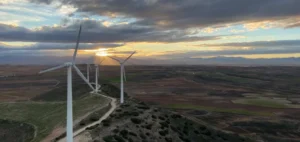Offshore wind energy projects in the United States are facing significant legal uncertainties following the executive order signed by Donald Trump last January. The order aims to limit the expansion of offshore wind projects while giving the attorney general the power to intervene in ongoing legal matters. The consequences of this decision could harm already approved projects, creating a climate of uncertainty for developers.
An Order That Calls Into Question Ongoing Projects
The order stipulates that the U.S. attorney general may request courts to suspend or delay ongoing litigation related to offshore wind projects, while offering the possibility to reassess existing lease agreements. This decision comes at a time when several major projects, such as Orsted’s Revolution Wind, are currently under judicial review.
The existence of these projects, already approved by the previous administration, is now threatened by this new policy, which could slow down the enthusiasm for offshore renewable energy. Some analysts suggest that the Trump administration may not vigorously defend the projects approved by the Biden administration in court. S&P Global indicates that the impact could be particularly severe for projects already under construction, such as those by Dominion Energy and Vineyard Wind.
Legal Risks for Project Developers
Offshore wind developers must now navigate a more complex legal environment. For example, the South Fork Wind project by Dominion Energy is one of many projects facing legal challenges. If the executive order is used to reconsider already approved projects, companies risk having to restart lengthy and costly administrative procedures.
Opponents of offshore wind projects see this situation as an opportunity to increase legal recourse, hoping that Trump’s order will lend weight to their cause. An example of this is the town of Nantucket, which is considering a lawsuit against the SouthCoast Wind project for environmental reasons. Nantucket has expressed concerns about the risks related to technical failures, such as the one that occurred with Vineyard Wind, a project that has already faced delays.
Projects Under Pressure
The legal uncertainty created by the executive order could have significant repercussions for future developments in the offshore wind energy sector. While projects like Vineyard Wind 1 and 2 or New England Wind already have permits, the possibility of a permit review could lead to further delays in the approval of other projects. S&P Global highlights that investors will now need to incorporate this legal uncertainty into their financial projections, especially since permit revisions could take up to six months. These developments shed light on the legal fragility surrounding the future of offshore wind energy in the United States.






















